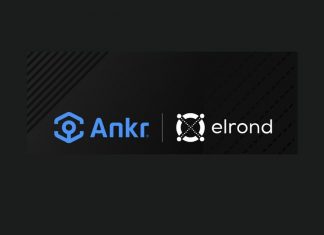This is the second part of this article. Here is the first part.
It has become monotonous and less engaging. Points help attract users and increase engagement, but they have become tiresome. People get tired of performing tedious airdrop tasks. Let’s discover more crypto trends.
1) Revitalizing Point Farming Through Gamification
Gamification is injecting new life into point farming. It is making point farming more interactive and fun. Instead of long airdrop tasks, you can play games and earn points. Let’s look at some examples:
- Sanctum’s Wonderland
In Sanctum’s Wonderland, you collect pets and earn points (EXP) to level them up. The community also collaborates to tackle quests, making it more engaging and fun while earning points.
It differs from regular airdrop tasks, where you do long activities to earn points. The airdrop also depends on your $SOL deposit, but the gamified approach makes it fun and engaging, increasing user engagement.
Source: X
- Blackwing’s BXP Trading
Blackwing allows users to trade earned BXP points for testnet USD on their platform. Professional traders can earn higher airdrop points than those depositing their assets.
The gamification trend brings excitement into the trading and point-earning process. Expect more projects to adopt this strategy to engage users and make point farming more enjoyable. The gamification trend encourages community participation and user engagement.
Source: X
2) Anti-Trend of Low-Float, High-FDV Launches
Another of these crypto trends are Low-float, high-FDV (Fully Diluted Valuation) token launches are not too popular anymore. These token launches benefit VCs and teams selling at higher prices.
Many retail traders needed to be okay with the result of these launches. They always found themselves at the losing end when the token price dropped after launch. A new shift is leading to a fair token launch for retail investors. Here are two examples:
-
Binance’s Recent Approach
Binance is a DeFi protocol, and the token listing platform announced a change in its token listing process with modest valuations. It wants to pay attention to community rewards and not only insider allocation. Though ineffective, it is a step towards fairer token launches.
-
Ekubo and Nostra on Starknet
Ekubo allocated its tokens in thirds to users and the team and a DAO sale over two months, like ICO models. Nostra launched with a 100% FDV, distributing 25% via airdrops and 12% through a liquidity event. Despite concerns about early exits by teams and VCs, these models aim to provide fairer distribution.
Source: X
Fairer launch models are emerging in response to community dissatisfaction with regular launches. Successful new models could set a new standard. They could offer better opportunities for retail investors and promote healthier market dynamics.
3) McKinsey Coming to DeFi
Another of these crypto trends is DeFi. It allows you to own and use your assets without interference. Yet, as DeFi expands its core, it’s becoming challenging to explore, especially for new users. New users find it difficult to understand because of the many available methods. There is also an increased desire for a significant ROI.
Many consulting companies propose security features and several DeFi protocol solutions. I’ll give you two examples:
-
Gauntlet
Gauntlet requires millions of dollars to help its clients interact with DeFi protocols. It provides services like risk management and defi protocol optimization.
-
Morpho Blue and Mellow Protocol
They help DeFi consultants create markets with distinctive risk settings and vault operations. Mellow Protocol’s LRTs provide an efficient means to control the risk level they offer to depositors.
The shift towards management could mean DeFi protocols become more robust and efficient. If DeFi becomes more robust and efficient, it will benefit the ecosystem.
Source: X
4) Web2-like Onboarding to DeFi
The last of these crypto trends has remained a hurdle to cryptocurrency adoption. New users are often discouraged by the challenges of using unfamiliar apps. This complexity prevents new entrants from participating in DeFi platforms.
Some DeFi platforms are easy to use because of their recognizable Web2 patterns of account management. Here are two examples:
- Privy
Platforms like OpenSea use it. Privy allows users to create wallets with an email and 2FA code, making onboarding easier.
- Infinex and Coinbase Smart Wallet
Passkey is one of the methods used by Infinex to create wallets. It is like the regular process of creating passwords. With Coinbase’s Smart Wallet, you can carry out batch transactions. The wallet also pays gas fees on your behalf, leading to a smoother trading experience.
Source: X
It becomes easier when crypto-related applications onboard users like regular Web2 applications. Making things simpler will increase the growth of consumer apps. It will make it easier for users to explore applications and find their way around the crypto space. Wallets will be accessible, and transactions will be straightforward, boosting Crypto adoption.
Disclaimer
The information discussed by Altcoin Buzz is not financial advice. This is for educational, entertainment, and informational purposes only. Any information or strategies are thoughts and opinions relevant to the accepted risk tolerance levels of the writer/reviewers and their risk tolerance may be different than yours. We are not responsible for any losses you may incur due to any investments directly or indirectly related to the information provided. Bitcoin and other cryptocurrencies are high-risk investments so please do your due diligence. Copyright Altcoin Buzz Pte Ltd.

































